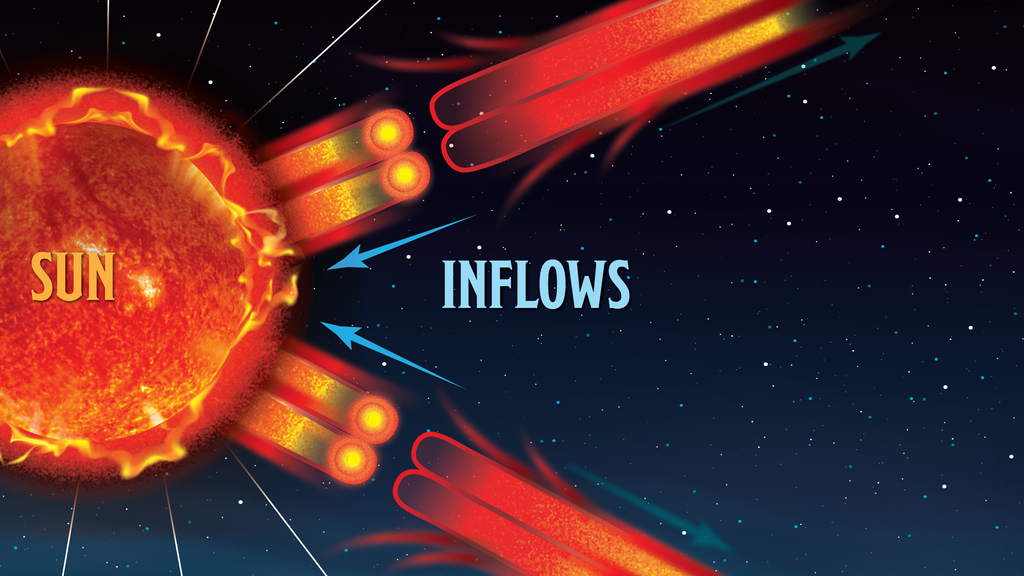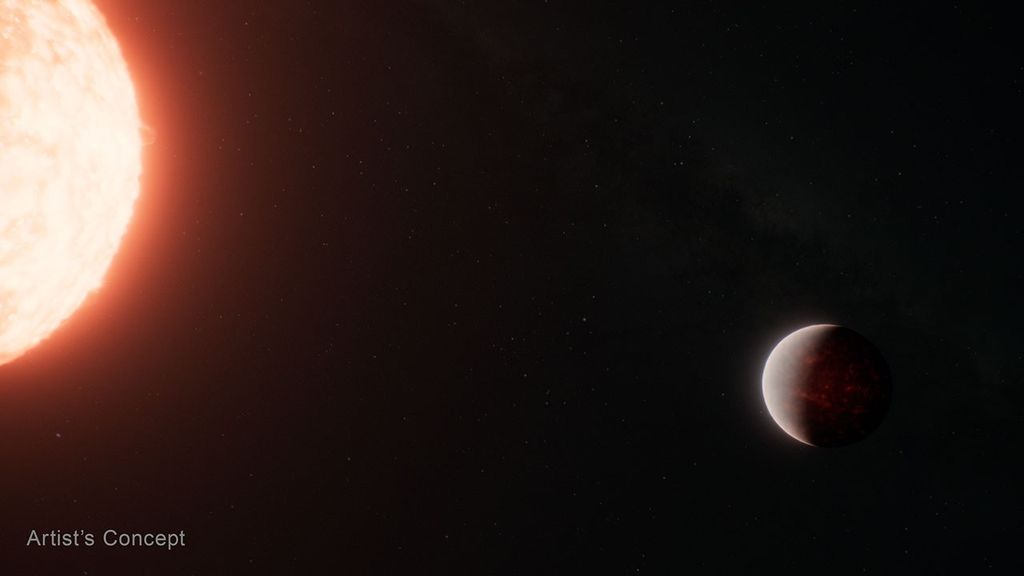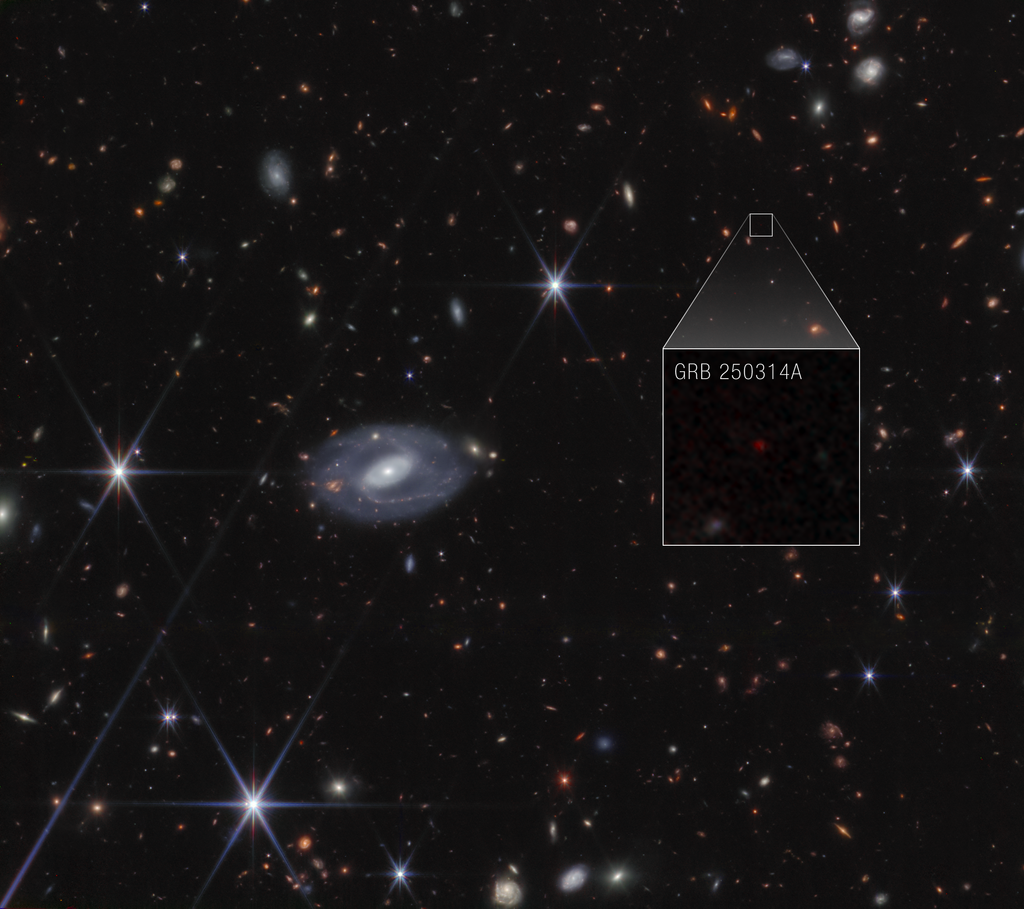1 min read
Scientists Find Faint Objects with Hubble that May Have Completed the Universe’s ‘Dark Ages’

Researchers at Arizona State University using NASA's Hubble Space Telescope believe they are seeing the conclusion of the cosmic epoch where the young galaxies started to shine in significant numbers. This marks a time when the so-called "Dark Ages" of the universe was completed, about 13 billion years ago. (Based on an estimate of 14 billion years for the current age of the universe.)
The arrows in this Hubble image indicate three of the thirty objects that the team discovered using Hubble's new Advanced Camera for Surveys (ACS). Astronomers believe that these numerous objects are faint young star-forming galaxies seen when the universe was seven times smaller than it is today (at redshifts of about 6) and less than a billion years old. This is right around the cosmic epoch where astronomers believe that radiation from hot stars in numerous young galaxies was converting the universe's cool hydrogen into a hot ionized gas.
The distances to the suspected young galaxies are believed to be so large given how red the observed objects are. This is interpreted as being caused by the enormous expansion of the universe since that early epoch. Almost all of the ultraviolet light from the young stars has been stretched (or redshifted) to far-red wavelengths. As a consequence, these three objects are only visible in the reddest of the two filters aboard the ACS.
The entire ACS field of view shows about thirty such faint red objects. This means nearly 8,000 such objects would fill a patch of sky no bigger than what is covered by holding your thumb at arm's length, the Arizona researchers estimate. They conclude that at least 400 million such objects filled in the entire universe at this cosmic epoch to the limit of this Hubble image. And, this is likely only the tip of the iceberg. NASA's planned 7-meter James Webb Space Telescope will see the entire population of these proto-galactic objects.
About the Object
- R.A. PositionR.A. PositionRight ascension – analogous to longitude – is one component of an object's position.12h 43m 32s
- Dec. PositionDec. PositionDeclination – analogous to latitude – is one component of an object's position.+11° 40' 32"
- ConstellationConstellationOne of 88 recognized regions of the celestial sphere in which the object appears.Virgo
- DistanceDistanceThe physical distance from Earth to the astronomical object. Distances within our solar system are usually measured in Astronomical Units (AU). Distances between stars are usually measured in light-years. Interstellar distances can also be measured in parsecs.Over 13 billion light-years (4,000 megaparsecs); Redshiftt: z = 6
- DimensionsDimensionsThe physical size of the object or the apparent angle it subtends on the sky.The ACS image is roughly 35 arcseconds (680,000 light-years or 210 kiloparsecs) in width.
About the Data
- Data DescriptionData DescriptionProposal: A description of the observations, their scientific justification, and the links to the data available in the science archive.
Science Team: The astronomers who planned the observations and analyzed the data. "PI" refers to the Principal Investigator.The dataset used in this image is from the HST archive proposal 9575, Principal Investigator W. Sparks (STScI). Principal Astronomers: H.-J. Yan, R. Windhorst and S. Cohen (ASU) - InstrumentInstrumentThe science instrument used to produce the data.HST>ACS/WFC
- Exposure DatesExposure DatesThe date(s) that the telescope made its observations and the total exposure time.April 28 - June 19, 2002, Exposure Time: 7 hours
- FiltersFiltersThe camera filters that were used in the science observations.F775W (i), F850LP (z)
- Object DescriptionObject DescriptionThe type of astronomical object.Distant Galaxies
- Release DateJanuary 9, 2003
- Science ReleaseScientists Find Faint Objects with Hubble that May Have Ended the Universe’s ‘Dark Ages’
- CreditNASA, H.-J. Yan, R. Windhorst and S. Cohen (Arizona State University)

Share
Details
Claire Andreoli
NASA’s Goddard Space Flight Center
Greenbelt, Maryland
claire.andreoli@nasa.gov





























